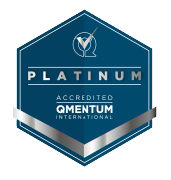The risks of self-medication as a health education proposal in the school context
an experience report
DOI:
https://doi.org/10.5327/prmj.2024.009Keywords:
self medication, health education, pharmacologyAbstract
Purpose: To report the experience of an integrated health activity developed by students of the Biomedicine course. Methods: This is a descriptive methodological study type of experience report of a health education activity on the risks of self-medication carried out in the first semester of 2024 with students in the 1st year of high school. The intervention addressed: concept of self-medication, classes of drugs most used, their causes and incorrect use. Subsequently, the class was divided into 6 groups of 5 members, to perform a Quiz with 10 questions about self-medication. Results: It was observed that the participants were attentive to the information, and through the dialogue it was realized that they did not have much knowledge about the consequences of the indiscriminate use of drugs. Through the dynamics, the students participated and demonstrated that they assimilated the knowledge, as two groups answered two questions incorrectly. For Biomedicine students, intervention in the school context has become a moment of learning, and interaction within the classroom is relevant through the action of health education. Conclusions: The interventions reflect on the importance that health professionals have in disseminating knowledge in order to promote the conscious and safe use of drugs in the population.
Downloads
References
Gebregziabher NK, Netsereab TB, Franchesk BT, Ghebreamlak HH, Yihdego NM. Prevalência de práticas de automedicação com antibióticos e fatores associados entre estudantes em cinco faculdades na Eritreia: um estudo transversal. Antimicrob Resist Infect Control. 2024;13:106. https://doi.org/10.1186/s13756-024-01466-6
Barreto MAF, Negreiros FD da S, Cestari VRF, Sampaio HA de C, Moreira TMM. Evidence of validity of the Risk Self-Medication Questionnaire focused on Health Literacy. Rev Bras Enferm. 2024;77(3):e20230386. https://doi.org/10.1590/0034-7167-2023-0386
Perrot S, Cittée J, Louis P, Quentin B, Robert C, Milon JY, et al. Self-medication in pain management: The state of the art of pharmacists' role for optimal Over-The-Counter analgesic use. Eur J Pain. 2019;23(10):1747-62. https://doi.org/10.1002/ejp.1459
Whalen K, Finckel R, Panvelil TA. Farmacologia Ilustrada. 6ª ed. Porto Alegre: Artmed; 2016.
Evangelista HI, Costa EBR da, Vaz DWN, Matos AS, Costa ML da, Rodrigues LCT, et al. The importance of extension activities in the academic training of its volunteers and in the quality of life of diabetic patients: a diabetic-friendly extension project. Res Soc Dev. 2020;9(11):e52691110186. https://doi.org/10.33448/rsd-v9i11.10186
Silva IM, Catrib AMF, Matos VC, Gondim APS. Automedicação na adolescência: um desafio para a educação em saúde. Ciênc Saúde Coletiva. 2011;16(Supl. 1):1651-60. https://doi.org/10.1590/s1413-81232011000700101
Lima JMS, Silva JCG, Cunha SMRAS, Lima MIS, Nunes EM. A prática da automedicação por universitários. Res Soc Dev. 2021;10(8):e47610817594. https://doi.org/10.33448/rsd-v10i8.17594
Prado MAMB, Francisco PMSB, Bastos TF, Barros MBA. Uso de medicamentos prescritos e automedicação em homens. Rev Bras Epidemiol. 2016;19(3):594-608. https://doi.org/10.1590/1980-5497201600030010
Arrais PSD, Fernandes MEP, Pizzol T da SD, Ramos LR, Mengue SS, Luiza VL, et al. Prevalence of self-medication in Brazil and associated factors. Rev Saúde Pública. 2016;50(Supl. 2):13s. https://doi.org/10.1590/s1518-8787.2016050006117
Domingues PHF, Galvão TF, Andrade KRC, Araújo PC, Silva MT, Pereira MG. Prevalência e fatores associados à automedicação em adultos no Distrito Federal: estudo transversal de base populacional. Epidemiol Serv Saúde. 2017;26(2):319-30. https://doi.org/10.5123/S1679-49742017000200009
Bueno MBT, Brod FAT. O lúdico para a área da saúde: perspectivas por meio do discurso do sujeito coletivo (DSC). Encitec. 2021;11(3):152-65. https://doi.org/10.31512/encitec.v11i3.564




